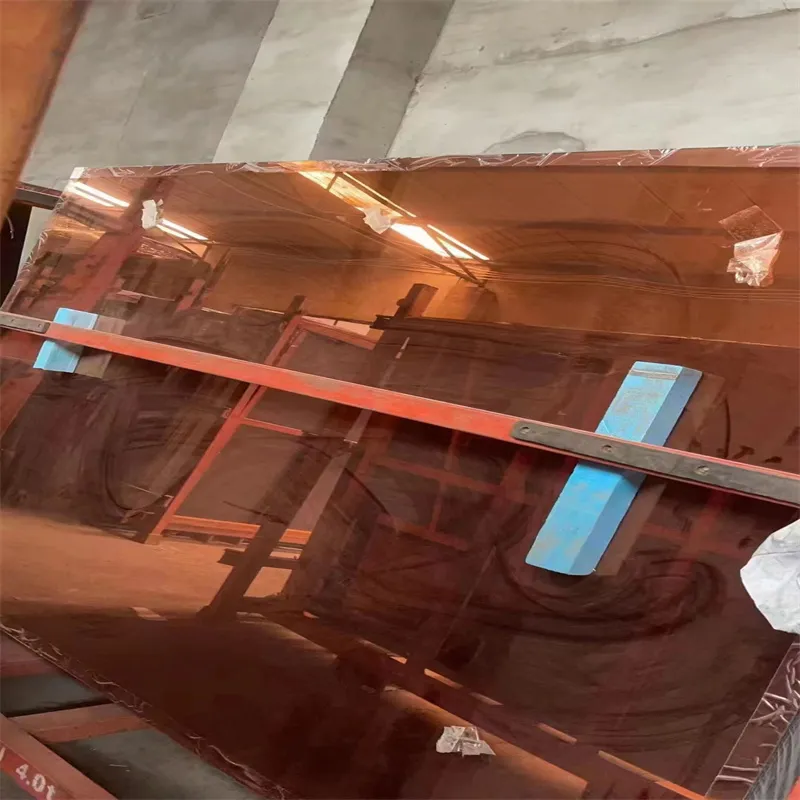Dec . 18, 2024 20:27 Back to list
low iron glass sheet
Low Iron Glass Sheet A Clear Choice for Modern Architecture and Design
In the world of architecture and interior design, materials play a vital role in not only the aesthetic appeal but also the functionality of a structure. Among the various materials available, low iron glass sheet has emerged as a popular choice for those seeking clarity, elegance, and superior performance. This specialized type of glass is characterized by its reduced iron content, which results in a high level of transparency and brightness.
Understanding Low Iron Glass
Traditional glass often contains iron impurities that can give it a greenish tint. While this can be subtle, it becomes more pronounced in thicker glass. Low iron glass, oftentimes referred to as low-iron or extra-clear glass, is manufactured with a significantly reduced iron concentration. This production process results in a remarkable clarity that allows for an almost unimpeded view through the glass. Low iron glass typically boasts a light transmission rate of over 90%, which is considerably higher than standard glass.
Applications in Architecture
The unique properties of low iron glass make it an ideal material for a variety of architectural applications. One of the most significant benefits is its ability to provide uninterrupted views, making it an excellent choice for large windows and glass facades. By minimizing distortion and color tint, architects can create stunning structures that seamlessly integrate the indoor and outdoor environments.
Moreover, low iron glass is often used in the design of skylights and curtain walls. The enhanced clarity allows natural light to permeate spaces without the distractions often associated with standard glass. This not only enhances the well-being of occupants but also leads to energy savings by reducing the need for artificial lighting during the day.
Design Versatility
low iron glass sheet

Beyond its architectural applications, low iron glass is celebrated for its versatility in interior design. It is frequently employed in the production of glass furniture, partitions, and decorative elements. For instance, glass tabletops and shelving units made from low iron glass exhibit a modern aesthetic that complements various design styles—from minimalist to luxury.
Additionally, the use of low iron glass in the creation of display cases ensures that products are showcased in the best possible light. Retailers and museums alike prefer this glass for its ability to draw attention without competing with the items on display. The result is a more engaging experience for customers and visitors.
Durability and Performance
Low iron glass does not only excel in aesthetics; it also demonstrates impressive physical attributes. When tempered or laminated, it gains additional strength and safety. This durability makes it suitable for high-traffic areas and applications where safety is paramount, such as balustrades and shower enclosures. Furthermore, it is resistant to UV rays, which helps protect interior furnishings from fading over time.
Sustainability Considerations
As sustainability becomes increasingly important in building practices, low iron glass aligns well with eco-friendly initiatives. Its high transparency can contribute to energy efficiency in buildings by harnessing daylight, thereby reducing reliance on electrical lighting. Moreover, glass is fully recyclable, making it a responsible choice for environmentally conscious designers and architects.
Conclusion
In summary, low iron glass sheet stands out as an exceptional material in modern architecture and design. Its remarkable clarity, versatility, and durability make it a go-to choice for a variety of applications, from expansive windows to elegant interiors. As architects and designers continue to push the boundaries of creativity, low iron glass will undoubtedly remain at the forefront, helping to create spaces that are not only visually breathtaking but also functional and sustainable. Whether for commercial or residential projects, incorporating low iron glass can elevate any design to new heights, ultimately providing a more connected and bright environment for everyone who experiences it.
-
Safety and Style with Premium Laminated Glass Solutions
NewsJun.24,2025
-
Reinvents Security with Premium Wired Glass
NewsJun.24,2025
-
Premium Float Glass Line for Modern Architecture
NewsJun.24,2025
-
Low Emissivity Glass for Energy-Efficient Architecture
NewsJun.24,2025
-
High-Performance Insulated Glass Solutions for Modern Architecture
NewsJun.24,2025
-
Elevates Interior Style with Premium Silver Mirror
NewsJun.24,2025
Related PRODUCTS














